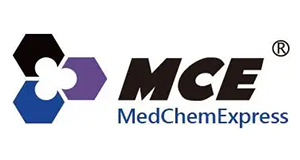Diphenylamine hydrochloride, CAS 537-67-7
Diphenylamine hydrochloride, CAS 537-67-7
SKU
MEXHY-N7133-10.1
Packaging Unit
10mM/1mL
Manufacturer
MedChemExpress
Availability:
loading...
Price is loading...
Product Description: Diphenylamine hydrochloride (N-Phenylaniline hydrochloride) is an antihyperglycemic agent with oral activity and a common structure in non-steroidal anti-inflammatory drugs (NSAIDs) that uncouples oxidative phosphorylation in mitochondria, leading to a decrease in hepatic cell ATP levels and causing liver cell damage. Diphenylamine hydrochloride is also an industrial antioxidant, a dyeing mordant, and is used in agriculture as an antifungal and antibacterial agent[1][2][3][4].
Formula: C12H12ClN
References: [1]Safe S, et al. Identification of toxic impurities in commercial diphenylamine. Bull Environ Contam Toxicol. 1977 Feb;17(2):204-7./[2]Masubuchi Y, et al. Possible mechanism of hepatocyte injury induced by diphenylamine and its structurally related nonsteroidal anti-inflammatory drugs. J Pharmacol Exp Ther. 2000 Mar;292(3):982-7./[3]W E Alexander, et al. Metabolism of diphenylamine in the rat, rabbit and man. Food Cosmet Toxicol. 1965 Oct;3(4):571-9. /[4]M S Karawya, wt al. Diphenylamine, an antihyperglycemic agent from onion and tea. J Nat Prod. 1984 Sep-Oct;47(5):775-80.
CAS Number: 537-67-7
Molecular Weight: 205.688
Compound Purity: 99.92
Research Area: Metabolic Disease
Solubility: DMSO : 250 mg/mL (ultrasonic)
Target: Bacterial;Fungal
Formula: C12H12ClN
References: [1]Safe S, et al. Identification of toxic impurities in commercial diphenylamine. Bull Environ Contam Toxicol. 1977 Feb;17(2):204-7./[2]Masubuchi Y, et al. Possible mechanism of hepatocyte injury induced by diphenylamine and its structurally related nonsteroidal anti-inflammatory drugs. J Pharmacol Exp Ther. 2000 Mar;292(3):982-7./[3]W E Alexander, et al. Metabolism of diphenylamine in the rat, rabbit and man. Food Cosmet Toxicol. 1965 Oct;3(4):571-9. /[4]M S Karawya, wt al. Diphenylamine, an antihyperglycemic agent from onion and tea. J Nat Prod. 1984 Sep-Oct;47(5):775-80.
CAS Number: 537-67-7
Molecular Weight: 205.688
Compound Purity: 99.92
Research Area: Metabolic Disease
Solubility: DMSO : 250 mg/mL (ultrasonic)
Target: Bacterial;Fungal

 Deutsch
Deutsch









